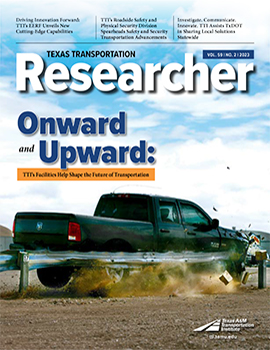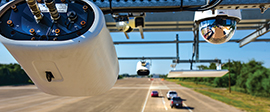Connected transportation is a major evolution in how vehicles and infrastructure will interact in the future, affecting every facet of transportation safety and mobility. Vehicles and the infrastructure will be able to talk to each other and communicate their real-time conditions. The lifespan of this research is expected to be decades as communication and message standards, applications, and new data collection and analysis techniques are developed to bring this transformational technology to the roadways we all drive.
The Texas A&M Transportation Institute (TTI) is poised to lead the way with our living research test beds located at the Texas A&M-RELLIS campus.
Connected Infrastructure Laboratory
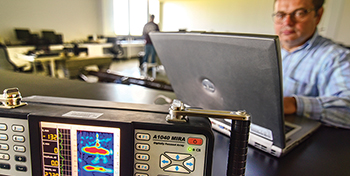
The Connected Infrastructure Laboratory is a fully equipped virtual collaborative workspace where different disciplines can work together to develop, test and deploy next-generation sensors and data applications for the connected and automated vehicle environment and the overall infrastructure arena. The facilities are a living laboratory for undergraduate and graduate students as they develop expertise in connected transportation and grow into industry leaders in this emerging discipline.
Connected Vehicle Assessment Simulation Test Bed
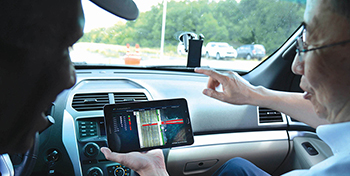
TTI has the capability to develop an augmented-reality environment where real entities (e.g., vehicles and traffic signal operation) are combined with simulated traffic and displayed on a screen. The first-of-its-kind approach — called Connected Vehicle Assessment Simulation (CONVAS) — marries the cost-effectiveness of computer simulation with actual roadway operations to produce an efficient and dependable evaluation mechanism for the Federal Highway Administration. TTI researchers developed an enhanced hardware-in-the-loop (HITL) simulation by incorporating an actual connected vehicle (CV) on a roadway network into a simulation model and displaying simulated CVs inside the real vehicle at the same time. This enables development and testing of advanced CV applications or strategies by allowing assessments of how CVs respond to each other and other entities such as pedestrians, emergency vehicles and transit vehicles in a controlled environment. This is the first time HITL simulation has ever been applied in this way.
Smart Intersection
TTI’s Smart Intersection advances research in traffic signal control, detection technology and CV infrastructure to increase awareness and safety on roadways. Located on the RELLIS campus, the Smart Intersection has a fully actuated traffic signal with signal poles and mast arms, painted pedestrian crosswalks, and a bicycle lane. TTI, Econolite, other vendors and the Texas Department of Transportation (TxDOT) contributed to the intersection installation and additional research equipment.
The intersection can accommodate detection and communication equipment for conducting a variety of tests. The intersection also includes flashing yellow arrows on all four approaches; radar detection for the northbound and southbound approaches; video detection for all four approaches; a GRIDSMART® system to detect pedestrians, bicyclists and vehicles at the stop bar; and numerous dedicated short-range communications (DSRC) radios constituting the connected infrastructure.
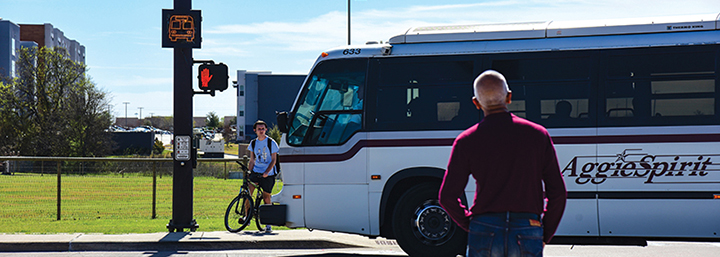
The Smart Intersection was initially developed as part of the TxDOT Automated and Connected Vehicle Test Bed to Improve Transit, Bicycle and Pedestrian Safety project. The project developed a concept of operations for buses equipped with DSRC radios to communicate with the traffic signal that an approaching bus was turning. The audio message “Caution Bus Turning” in English and Spanish was automatically activated, as was a supplemental bus sign above the pedestrian sign on the traffic pole. The system was demonstrated for a year at the George Bush Drive and Penberthy Boulevard intersection, with 10 Texas A&M University buses equipped with DSRC radios communicating to the traffic signal system.
The Smart Intersection recently supported the Traffic Optimization for Signalized Corridors (TOSCo) project to conduct end-to-end testing of all system components before TOSCo was deployed in real traffic along FM 1960 in Houston. The Smart Intersection will also support the Smarter Intersections Pilot Project recently selected for funding though a Strengthening Mobility and Revolutionizing Transportation grant from the U.S. Department of Transportation.
This Smart Intersection will enable TTI researchers to install additional signal control, detection, DSRC and other connected infrastructure. The Smart Intersection will support research to develop CV applications and to test the interoperability of signal control and connected infrastructure.
Connected Work Zone
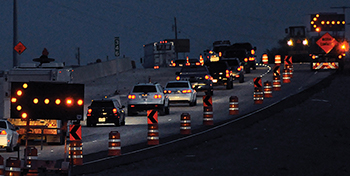
TTI deployed CV technology along the I-35 corridor to improve safety and mobility through work zones by providing in-vehicle devices to freight companies to receive work zone infrastructure data on lane closure location, capacity reduction, queue lengths and delay to assist in pre-trip and en-route planning for logistics.
Partnership with Neology
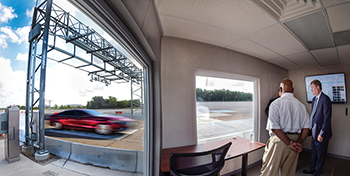
TTI and Neology Inc. recently completed the Neology Transportation Research Center and extended its long-term master research agreement for an additional five years, with an optional five-year extension. The new facilities will help accelerate the vision for smart cities and safer communities by advancing next-generation technologies in the mobility industry.
Neology Inc. is a leading provider of mobility solutions and services in the transportation, tolling and public safety fields. Powered by artificial intelligence, Neology’s solutions and services help improve the safety, security and sustainability of critical infrastructure. The company’s mobility experts work closely with global customers and a partner ecosystem to leverage next-generation technology.
Toll Gantry
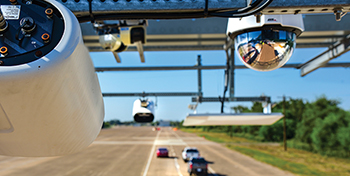
Congress required that by 2016, the tolling industry develop interoperability standards allowing locally issued toll tags to work anywhere in the nation. “We tested a possible solution from two equipment manufacturers,” says TTI Associate Research Scientist Roberto Macias. “We used the radio-frequency identification toll tags from various agencies and determined if the tested products could read them and if the vendors could be tied together.”
TTI conducted its testing by sending vehicles equipped with various toll tags through a toll gantry equipped with the transponders from the manufacturers.
